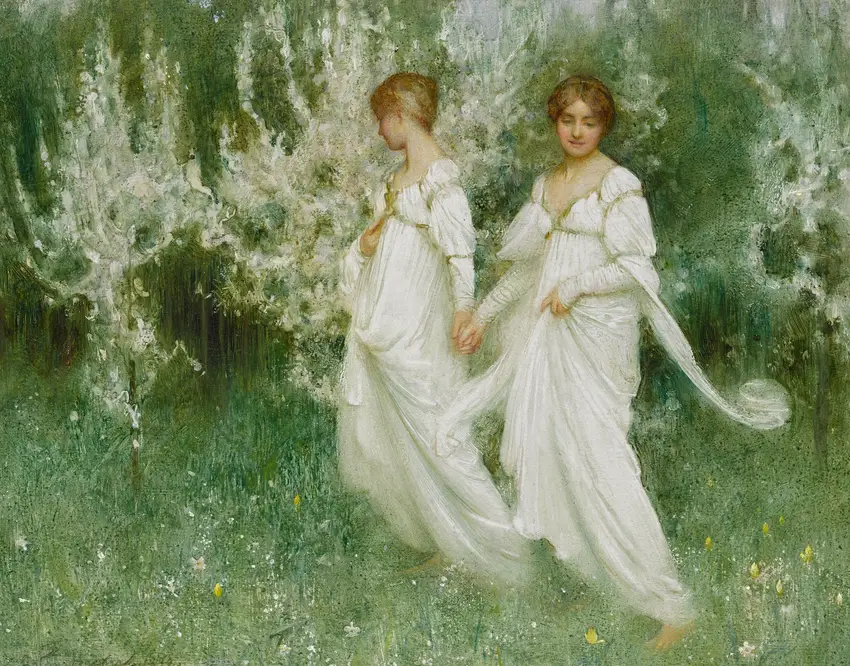-
-full.webp)
Stricken (1914)
A woman clutches her chest, eyes wide with sudden pain. The folds of her dress twist as she stumbles, one hand grasping empty air. Shadows deepen around her, swallowing the light. A single moment frozen—breath caught, body mid-fall, the world tilting irrevocably.
-
 (1913)-full.webp)
Vale (Farewell) (1913)
A woman stands at the water’s edge, her back turned, cloak billowing in the wind. The boat drifts away—no return, no last glance. Only the churning waves speak what’s left unsaid.
-

Innocence
A tender portrayal of purity, where light and shadow dance around a figure lost in quiet reflection.